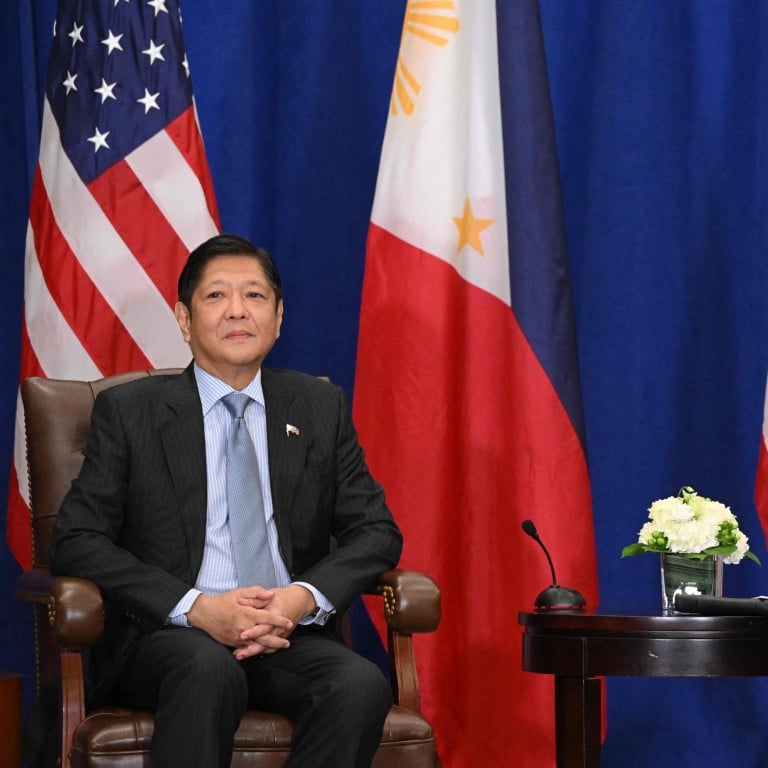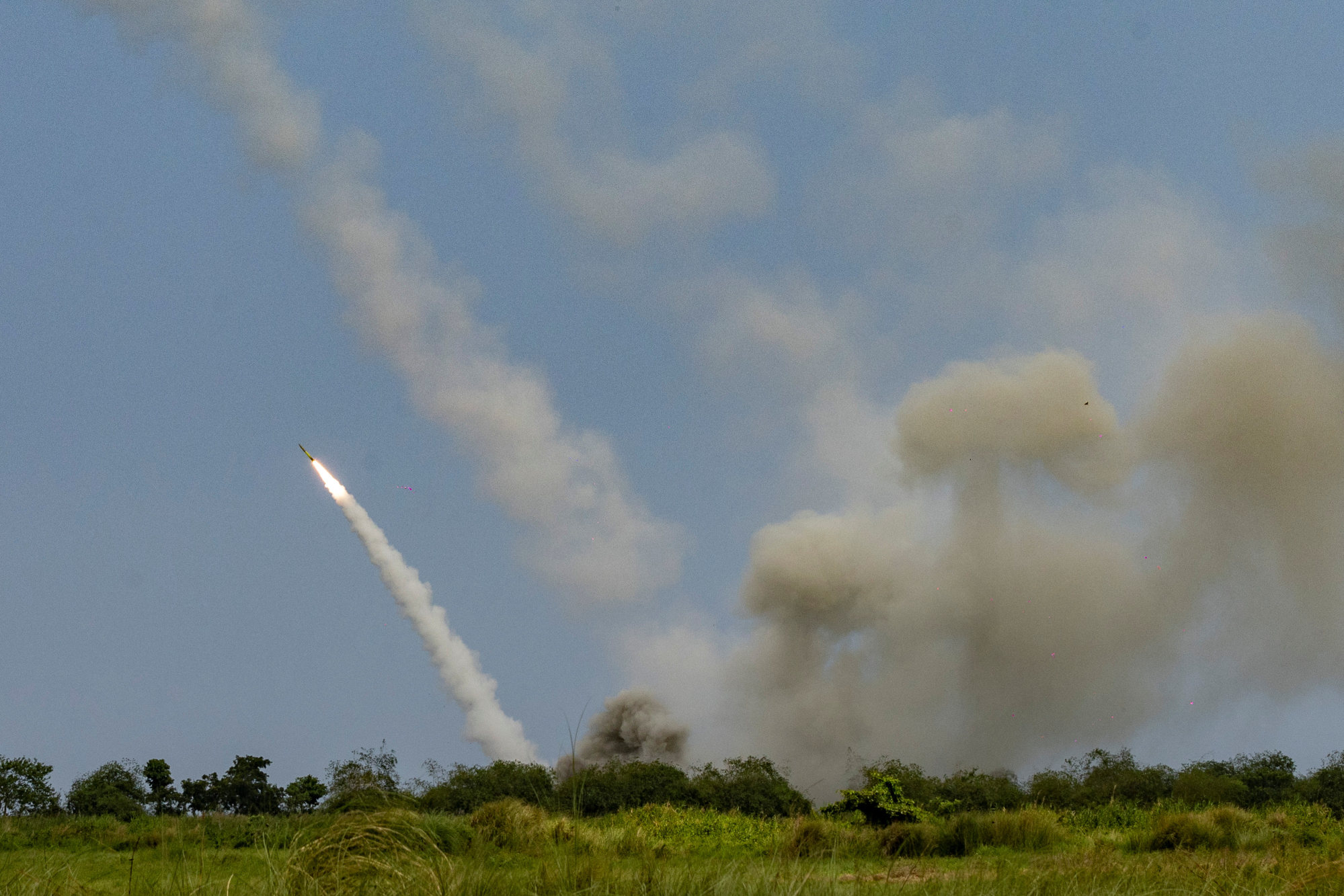
Philippines’ Marcos set to talk trade, defence with Biden amid South China Sea, Taiwan tensions
- Manila in a bind despite US strengthened ties as it does not want to risk antagonising its largest trade partner, China, should a crisis erupt over Taiwan
- Shipbuilding in Subic, geothermal project in Mindanao, mineral processing facility among economic issues Marcos Jnr can raise with Biden
Marcos Jnr attended one drill during which allied militaries undertook coordinated air and land-based strikes to sink a target ship off the West Philippine Sea.

The Monday meeting is Marcos and Biden’s second, after they spoke in New York last year on the sidelines of the 77th session of the UN General Assembly. Such large-scale exercises and high-level exchanges give shape to both sides’ desire for the alliance to evolve to suit changing times.
Beijing agrees to South China Sea fishing-rights talk: Philippines’ Marcos Jnr
It has extended its maritime power projection in contested waters by constructing fortified features in the South China Sea. It also seeks access to foreign bases from Cambodia and Myanmar to the Solomon Islands. All these forebode blue-water ambitions that can undercut long-standing US naval primacy.
Joint exercises in Batanes and Cagayan, as with US-Japan exercises in the Ryukyus, indicate a desire to step up readiness to react to a potential crisis in the area. Manila, Washington and Tokyo are also discussing ways to strengthen trilateral security cooperation.
The locations of the four new sites for US military access indicate Manila’s accommodation of Washington’s urgent priority. But fears of getting dragged into a US-China clash over Taiwan and worries about Beijing’s reaction present a quandary for Marcos Jnr.
A week before his US trip, Marcos Jnr met Chinese State Councillor and Foreign Minister Qin Gang in Manila. Beijing made known its view about the additional military sites close to Taiwan. This puts the Philippines in a bind – it wants to keep its commitment to the US, but fears antagonising its largest trade partner China.
US and Philippines to boost ties amid an increasingly assertive China
It remains to be seen whether Manila’s gamble of increased US military access will pay off. While it could frame the move as a contribution to regional peace and stability, it is worth asking whether this view is shared by its Southeast Asian neighbours who have as much, if not more, at stake in the hotspot. There are 350,000 Indonesians and 230,000 Vietnamese – more than the 150,000 Filipinos – living and working in Taiwan.
Vietnam, a rising investment and manufacturing hub, has deeper economic interactions with both sides of the strait than the Philippines.
Marcos Jnr’s US visit is a chance to discuss the economic dimension of bilateral ties, which regrettably is often crowded out by security issues. A US company took over an insolvent shipyard in Subic in a deal billed as the biggest public-private partnership in the 75-year history of the relations. But the acquirer’s lack of a shipbuilding track record raised questions about its ability to steer the asset’s return to profitability.

Marcos Jnr may also follow up on US pledges made during the visit of Vice-President Kamala Harris to Manila last November. This includes the construction of a geothermal power plant in Mindanao, which can aid the country’s energy transition, and the creation of a nickel and cobalt processing facility to bolster critical mineral supply chains.
In the last 2+2 dialogue in Washington, both sides also discussed building resilient semiconductor supply chains. With Taiwan’s TSMC building new chip factories in the US and Japan, the Philippines may want to get a slice of the friendshoring pie as it steps up support for the island.
Among America’s network of allies in the First Island Chain, the Philippines is the most economically and militarily vulnerable. How it decides on its next moves can determine whether it will become a showcase of the alliance’s robust and enduring value, or an exhibit of Beijing’s ire.
Lucio Blanco Pitlo III is a Taiwan Fellow and Visiting Scholar at the National Chengchi University’s Department of Diplomacy and Center for Foreign Policy Studies.


